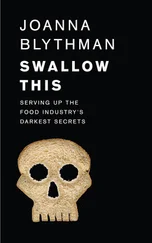Healthy-eating guidelines abound and school catering services can all offer chapter and verse on how they are doing their bit in this regard. But these guidelines are applied within the limits of mass-catering processed foods; they rarely mean that children are given more fresh fruit and vegetables or more wholesome basic ingredients. On the contrary, the most tangible manifestation of healthy-eating guidelines is an increased presence of highly processed items in the form of ‘low-fat’, ‘lite’ and ‘diet’ foods and drinks.
There are different justifications offered for the ‘healthiness’ of these items depending on what they are. The first is that they use margarine or vegetable fat instead of butter or lard. Yet some scientists believe that the trans-fats in the former may be at least as unhealthy as the saturates in the latter. The second is the substitution of skimmed milk for whole milk. However, although it has less fat, experts do not agree over whether skimmed milk is better for children. The third is the substitution of artificial sweeteners for sugar. Sweeteners do contain fewer calories than sugar, but many scientists have reservations over the safety of the former and whether or not they actually result in lower sugar consumption.
So the jury is still out on all these issues. But the current net effect of well-intentioned ‘healthy-eating’ guidelines in schools is that children are eating more heavily processed, technologically altered foods than before, foods that have not been tried and tested over time and whose long-term effect on human health is not yet known.
Processed techno-foods fit in very well with the economics of modern school catering, which boils down to running a cheap, lowest-common-denominator service with as little waste as possible. There is absolutely no slack for experimenting with more natural and nourishing foods which might require more labour, some food education and scope for experimentation.
In fact the prevailing budget pressures on school caterers – whether they are privatised or public sector – mean that they cannot afford to take any risk at all and so instead it’s now customary to major on the sure-fire ‘children’s foods’ such as crisps, fizzy drinks and confectionery because these are guaranteed to sell. These items have a long shelf life too. No surprise, then, when the typical statutory school cafeteria fruit bowl – generally full of the dullest fruits around, such as mealy-textured, bruised apples, shrunken oranges, bright green or wizened black bananas – has few takers.
Children aren’t always very good at describing school food. Here’s a taste of some of the delightful dishes commonly on offer.
A menu of modern school meals classics
For main course:
TURKEY/CHICKEN KIEVS/NUGGETS, SPAGHETTI AND POTATO SHAPES
(Cheap, processed, intensively reared meat in fatty fried crumb coating; sweet, stodgy tinned spaghetti; reconstituted dried potato and additives in fatty coating)
HOT DOG ROLL/SAUSAGE ROLL, BEANS AND POTATO SHAPES
(More cheapest of the cheap meat full of additives and water, stuck in a pappy, over-refined white roll or coated with artery-clogging, fat-laden pastry, with sweet and salty beans, plus spuds as above for added stodge)
VEGETABLE CURRY, MIXED VEG AND RICE
(This more promising-sounding vegetarian alternative consists of frozen ready-cut vegetables defrosted in sweet, starch-thickened catering curry sauce with waterlogged frozen vegetable ‘macedoine’ and gluey white rice)
CHEESE AND BACON/BROCCOLl/SWEETCORN FLAN, TURNIP, POTATOES
(Rubbery Cheddar, miscellaneous ‘savoury’ ingredients and reconstituted dried egg in a greasy layer of under-cooked pastry, with boiled diced turnip – about the cheapest frozen vegetable that can be bought in and about the least likely to appeal to children – with a scoop of rehydrated ‘mashed’ potatoes)
SAVOURY PASTIE, PEAS, CHIPS
(An unidentifiable-by-ingredient mulch combining processed meat such as corned beef or starchy potatoes with industrial fillers and flavourings, encased in lardy pastry; watery peas and reheated chips)
MEAT CASSEROLE, CABBAGE, POTATO
(A small amount of meat, often sausage, in thickened starchy sauce with frozen vegetables; boiled-to-death cabbage and the regulation scoop of rehydrated mash)
ROAST MEAT AND POTATOES, SPROUTS
(Pre-cooked, thinly sliced meat reheated in catering brown sauce, ready-cooked roasted potatoes and sulphurous, over-cooked sprouts)
(Thin slices of ready-made catering dough topped with watered-down tomato paste and rubbery Cheddar, then baked)
BATTERED FISH WITH TOMATO
(A small amount of desirable white fish dwarfed by its fatty batter, served with unadorned tinned tomatoes)
For pudding:
(Shuddery synthetic dessert containing a litany of additives and no real anything else apart from generous amounts of sugar and gelatine)
(Deep-fried, sugary stodge lubricated with extra sugar, colourings and flavourings, plus sugary, additive-laden ‘custard’, usually from a just-add-water mix)
CHOCOLATE CRISPIE/ICED SPONGE/CARAMEL FLAN/FLAPJACK/GINGERBREAD AND CUSTARD
(As above, minus the frying)
(Lumpy milk pudding which rarely appeals to children, even in its unlumpy form, served with sweetened tinned fruit)
(Cup cakes and tray bakes which are heavy on sugar, margarine and refined white flour)
To drink:
CARTONS OF FRUIT SQUASH AND ‘DRINK’/ BLACKCURRANT DRINK/COLA/CARBONATED ORANGE
(A heavy-handed serving of sugar topped up with water and additives)
(Sugar, milk powder, flavourings and thickeners mixed up with water)
It’s no wonder that many children loathe school meals and abandon them at the first possible opportunity. But what about other school food?
School tuck shops have not served anything other than sweets, crisps and fizz since time immemorial. Nothing has changed in that department, except perhaps for the arrival of grain-based biscuits which purport to be healthy but whose heavy-handed sugar composition gives the lie to that.
What is new, however, is the arrival of snack and drink vending machines in schools. Filled exclusively with everything that is the antithesis of wholesome eating, these machines are becoming a common feature in many secondary and even some primary schools. Most teachers disapprove of them, but when a school is strapped for cash the income they offer can be tempting.
Looking at a secondary school in Merseyside in 1998, the Guardian reported that the profit to the school from its eight vending machines was forecast at £15,000 a year. Revenue on this scale can keep a music department in musical instruments or buy a much needed piece of equipment. But this system also handicaps the more wholesome alternative. In many schools nowadays, the only place a child can get a free and straightforward drink of tap water is in the washrooms!
School food has got so bad that it looks as if the government will reintroduce nutritional standards at least for school meals, if not for tuck shops. It remains to be seen how effective these will be in tackling the unhealthy monster that school meals have become.
But in the meantime, the current nature of school catering means that parents cannot assume that there is anything reasonably wholesome on offer on a regular basis.
Читать дальше











